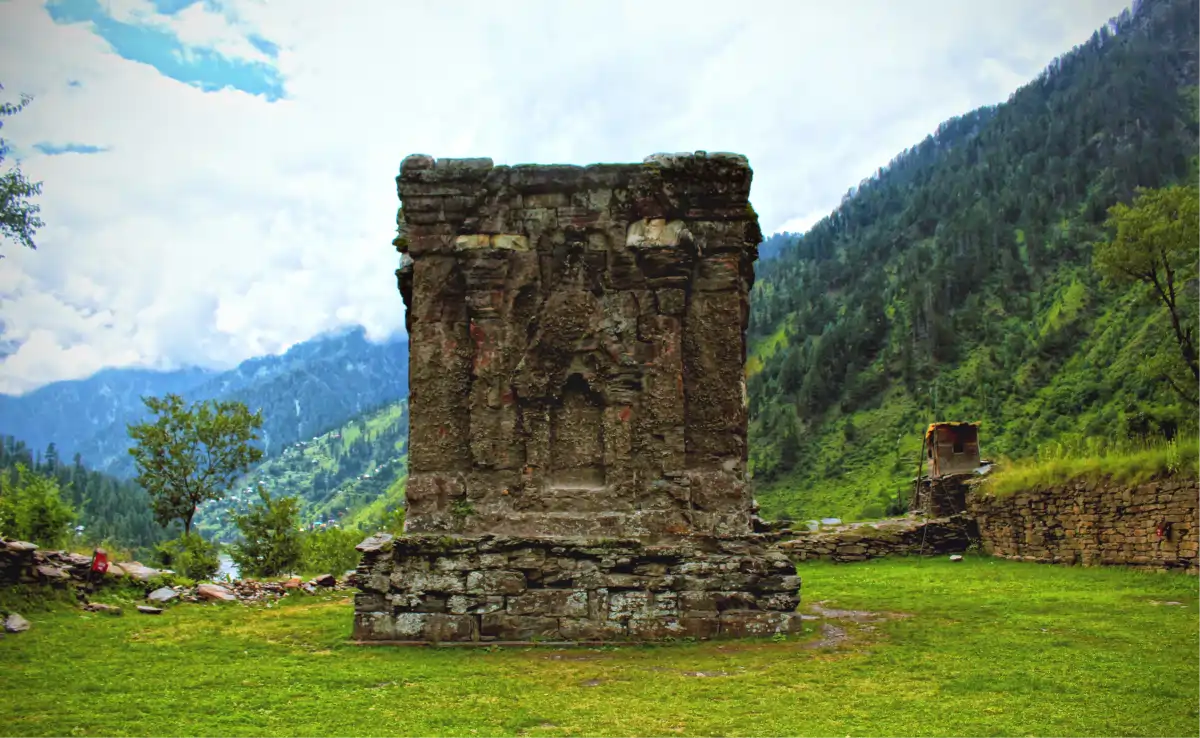
The Artisans Behind Kashmiri Handicrafts: A Timeless Craft
Azad Kashmir, a region known for its breathtaking landscapes, rich history, and vibrant culture, is equally famous for its unique Kashmiri handicrafts. These handcrafted jewels passed down through generations, are
Azad Kashmir, a region known for its breathtaking landscapes, rich history, and vibrant culture, is equally famous for its unique Kashmiri handicrafts. These handcrafted jewels passed down through generations, are still thriving in the heart of the area. Kashmiri handicrafts, particularly the picturesque valleys of Azad Jammu and Kashmir, are a testament to the region’s ongoing cultural identity and a tradition of delicate workmanship. In this blog, we’ll take you on a journey to discover the timeless craftsmanship of Kashmir, exploring the artisans, their traditions, and the challenges they face in today’s world.
The Heartbeat of Kashmir’s Cultural Heritage
Kashmir’s handicrafts tell the story of a region that has seen a blend of different cultures, from the ancient Hindu Shahi rulers to the Mughal Empire and beyond. The influences of Persian, Central Asian, and local artistic traditions have fused to create a distinct Kashmiri aesthetic. Whether you’re investigating the lavish valleys of Kashmir or the pleasant scenes of Azad Jammu and Kashmir, you’ll experience rich embroidery of high-quality works of art that mirror the locale’s profound social roots.
Handicrafts in Kashmir are more than just beautiful objects; they represent a way of life, a tradition that has survived centuries. Passed down through generations, the art of crafting these pieces remains deeply embedded in the region’s identity. Artisans devote themselves to honing their skills, ensuring that each item carries the wisdom and history of those who came before them.
Famous Kashmiri Handicrafts: A World of Beauty and Craftsmanship
The handicrafts of Kashmir are a dazzling array of creativity and intricate design. Let’s explore some of the most famous crafts that have gained global recognition for their beauty and skill.

1. Kashmiri Shawls (Pashmina and Kani)
Kashmiri shawls are amazing, with the Pashmina and Kani shawls standing apart as the best models. Pashmina shawls are produced using the delicate fleece of the Pashmina goat, known for their sensitive texture and warmth. These luxurious shawls are handwoven with intricate designs that often feature nature-inspired motifs.
Artisans weave the Kani shawl using a traditional technique that involves small wooden spools to create stunning patterns. These shawls symbolize luxury and are sought after worldwide. Owning a Kashmiri shawl means owning a piece of Kashmir’s cultural legacy.
2. Kashmiri Carpets: The Art Beneath Your Feet
Hand-woven Kashmiri carpets are a great representation of the region’s skill. These carpets, made of wool or silk, are famed for their exquisite designs, which range from floral to geometric motifs. The carpet’s rich colors and luxurious texture reflect Persian and Mughal influences.
These carpets are frequently regarded as an investment, not only for their beauty but also for their durability and historical relevance.
3. Paper Mâché: A Tradition of Color and Creativity
Kashmir’s paper mâché art has been a treasured tradition for over 400 years. The process includes layering paper mache and molding it into various enriching objects. From boxes to lights and plates, these things are fastidiously painted with energetic varieties and enhanced with gold and silver leaf to make sensitive, resplendent show-stoppers.
What makes Kashmiri paper mâché truly special is the local flair added to each design, with patterns often drawn from Kashmiri folklore, flowers, and nature. Today, craftsmen are reviving this virtually lost skill by adding current motifs into their sculptures while maintaining ancient processes.

Wood Carving: Nature in Every Detail
Kashmir is rich in walnut wood, which artists have utilized for ages to make beautiful wooden sculptures. From small decorative pieces to large furniture and door frames, Kashmiri wood carving reflects an eye for detail and a deep understanding of design.
The artisans carve elaborate floral and geometric patterns, often depicting local wildlife or scenes from everyday life. These hand-carved masterpieces reflect the region’s beauty and showcase the artisans’ technical prowess.
The Craftsmanship of Kashmiri Handicrafts: Preserving a Legacy
In Azad Jammu and Kashmir, the art of crafting remains as vibrant and significant as it is in Kashmir. The region’s artisans are known for their precision, attention to detail, and deep respect for the traditions passed down through generations. Large numbers of these craftsmen work in little family-run studios, where abilities are granted through apprenticeships and close family ties.
Take Shahid Ali, a carpet weaver from Muzaffarabad, Azad Kashmir. He has been weaving high-quality carpets with meticulous attention to detail for over 40 years. His carpets mirror the skills passed down by his grandpa, and he is committed to keeping the heritage alive.
Similarly, Saira Begum, a paper mâché artist from Azad Kashmir, has spent years reviving the art of hand-painted paper mâché products. Her work is not just about creating beautiful items; it’s about telling the story of Kashmiri culture through colors, shapes, and symbols.
These artisans represent the soul of the region’s crafts; each piece they create connects the past with the present and helps to ensure that the artistry of Azad Kashmir continues to thrive.
Challenges Faced by Kashmiri handicraftsToday
Despite the immense cultural and economic value of Kashmiri handicrafts, the artisans face numerous challenges in today’s fast-paced, globalized world.
- Competition from Mass-Produced Goods
The ascent of efficiently manufactured merchandise, frequently made at lower costs, has driven numerous purchasers to pick less expensive options over the high-quality miracles of Kashmir. These efficiently manufactured things miss the mark on craftsmanship and uniqueness that Kashmiri handiworks offer, yet they are in most cases more available.
- Limited Market Access and Globalization
With the world becoming increasingly interconnected, many Kashmiri artisans struggle to reach global markets. Despite the beauty of their work, many artisans lack the resources or platforms to showcase their products internationally. Without the right exposure, their masterpieces remain confined to the local markets, limiting their reach and potential income.
- Declining Interest from Younger Generations
As the younger generations of Kashmir and Azad Jammu and Kashmir pursue modern careers, the interest in traditional crafts has declined. This generational shift jeopardizes the survival and sustainability of these time-honored techniques
- Instability at LOC and Economic Struggles
Long-standing conflict between India and Pakistan at the Line of Control (LoC) in Azad Jammu and Kashmir has often caused unrest in the region resulting in instability and affecting the artisan community. Regular interruptions influence the inventory of materials, admittance to business sectors, and the general economy. These difficulties make it harder for craftsmen to support their jobs.
- Environmental Threats
The loss of natural resources, such as walnut trees and Pashmina goats, is also a major worry. The overexploitation of these resources, with the problems posed by climate change, endangers the raw materials utilized in many traditional handicrafts.
Supporting Kashmiri Handicrafts: How You Can Make a Difference
While the challenges facing Kashmiri artisans are significant, there are several ways we can help support these incredible crafts and ensure their survival for future generations.
- Purchase Authentic Handcrafted Items
One of the most effective ways to support Kashmiri artisans is by purchasing authentic handicrafts. Buying directly from artisans or through fair trade organizations ensures that artisans are compensated fairly for their work. Your purchase helps preserve their craft and provides economic support.

- Promote Cultural Awareness
Educating others about the value of Kashmiri handicrafts can create more demand for these beautiful items. Organizing exhibitions, cultural events, and online platforms that showcase these crafts can help boost awareness and appreciation for Kashmiri artistry.
- Support Government and NGO Initiatives
The public authority and NGOs can assume a pivotal part in safeguarding Kashmiri craftsmanship by offering preparation programs, advancing maintainable practices, and giving monetary helps to craftsmen. Assisting craftsmen with getting to global business sectors and earning respect for their work can likewise help their endurance.
- Encourage Sustainable Practices
Promoting sustainable practices in sourcing materials is essential for the long-term health of both the crafts and the environment. Supporting artisans who practice eco-friendly methods ensures that the artistry of Kashmir can continue for generations to come.
Kashmiri handicrafts That Lives On
Kashmiri handicrafts are more than gorgeous items; they embody the heart and soul of a place with a rich cultural past. From the lush Pashmina shawls to the complex paper mâché and wood carvings, each piece narrates the artists who made it. In the face of contemporary difficulties, these artists maintain the traditions that have distinguished Kashmir for millennia.
By supporting these specialties and bringing issues to light about their worth, we can assist with guaranteeing that the imaginativeness of Kashmir, Azad Kashmir stays alive for people in the future to respect and love. The next time you find yourself in the enchanting region of Kashmir, take the time to explore the world of its artisans—a realm where tradition, skill, and passion converge to create timeless beauty.








